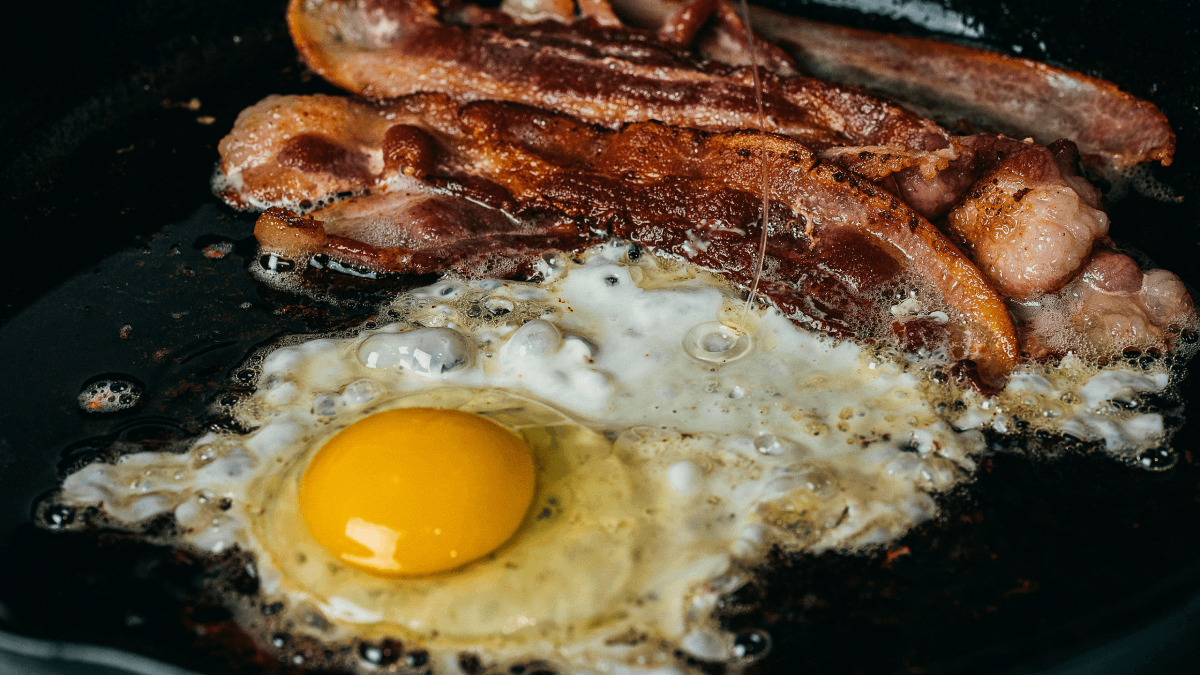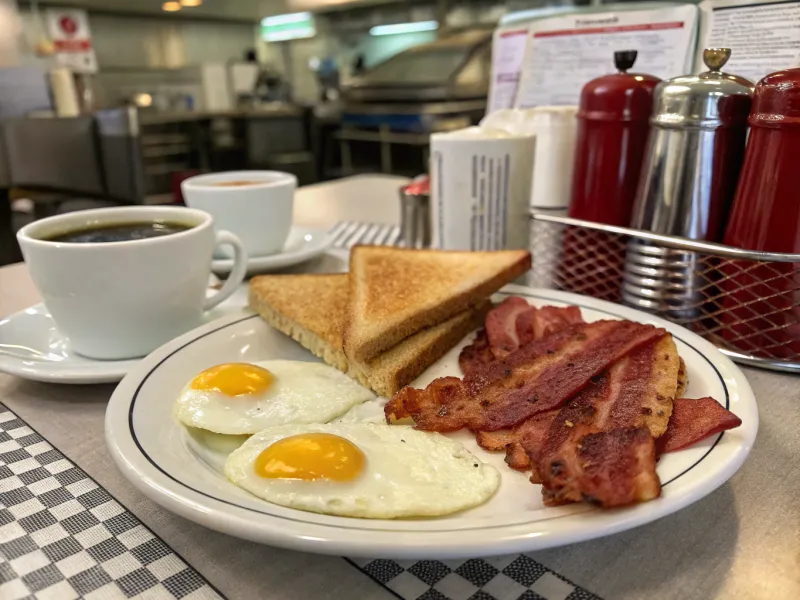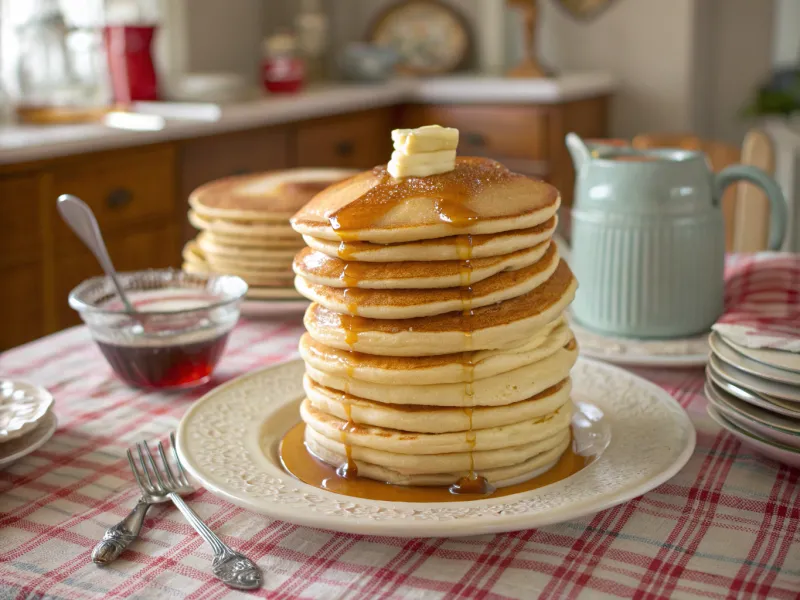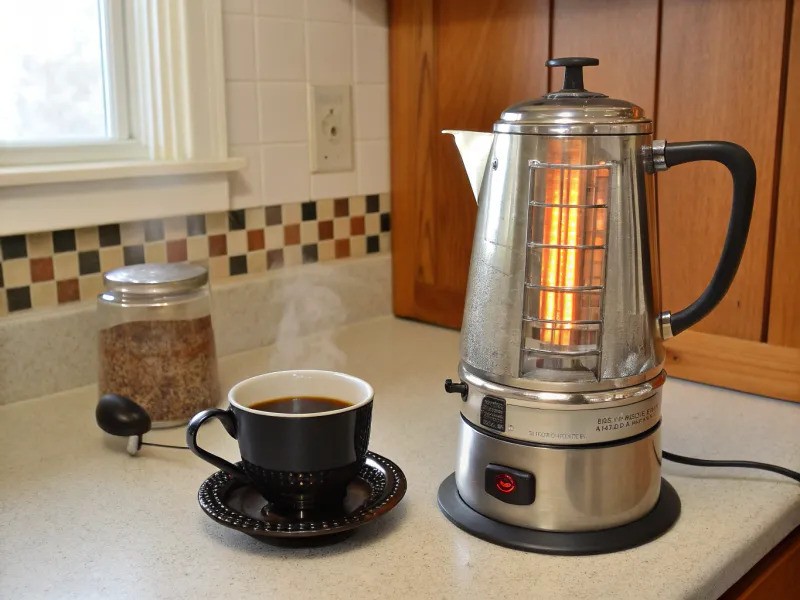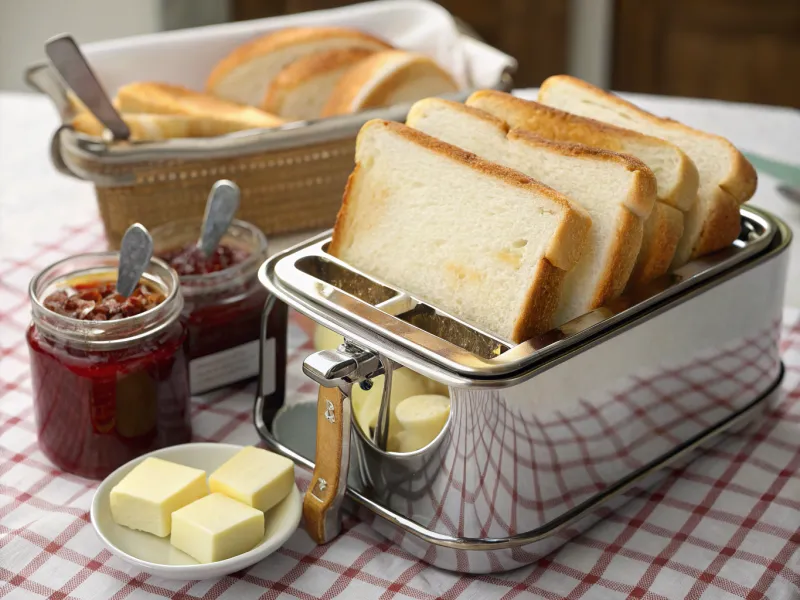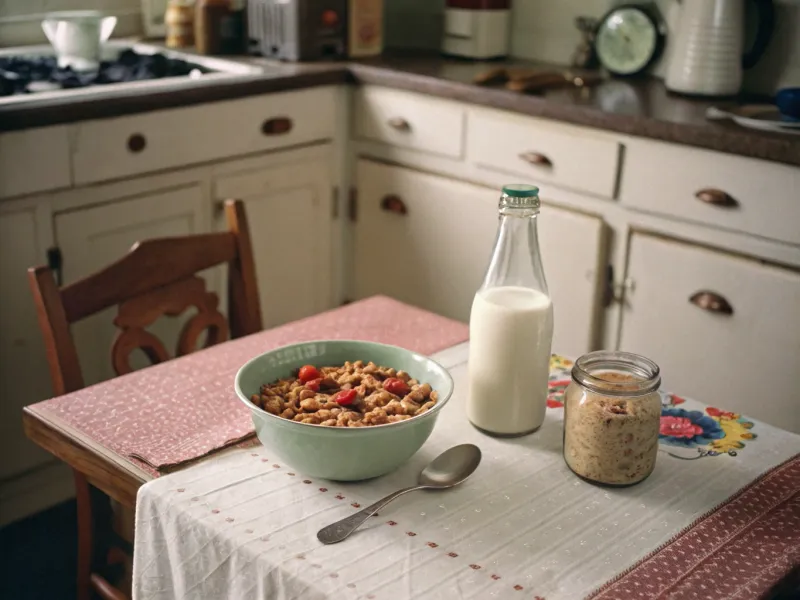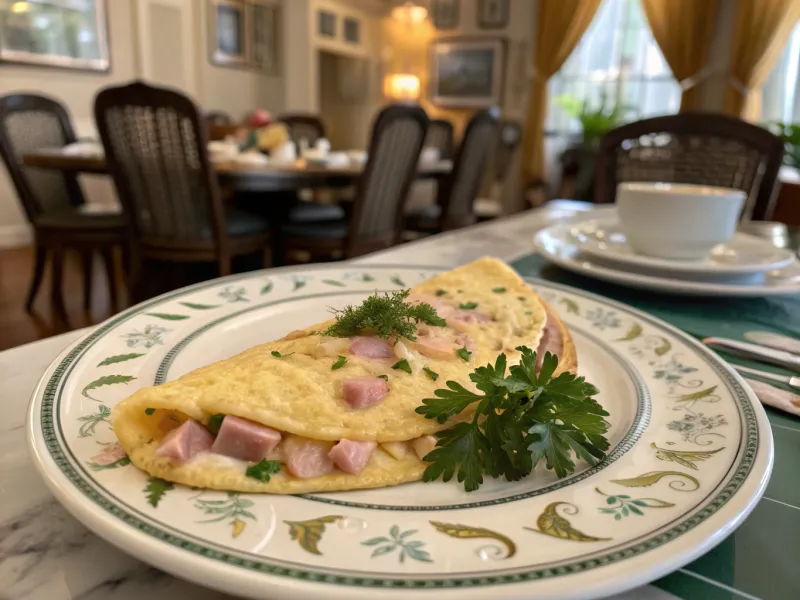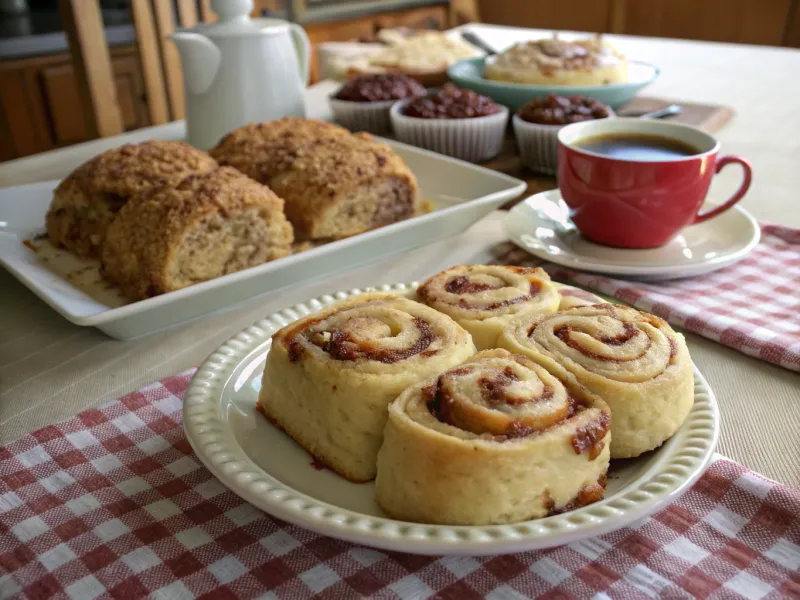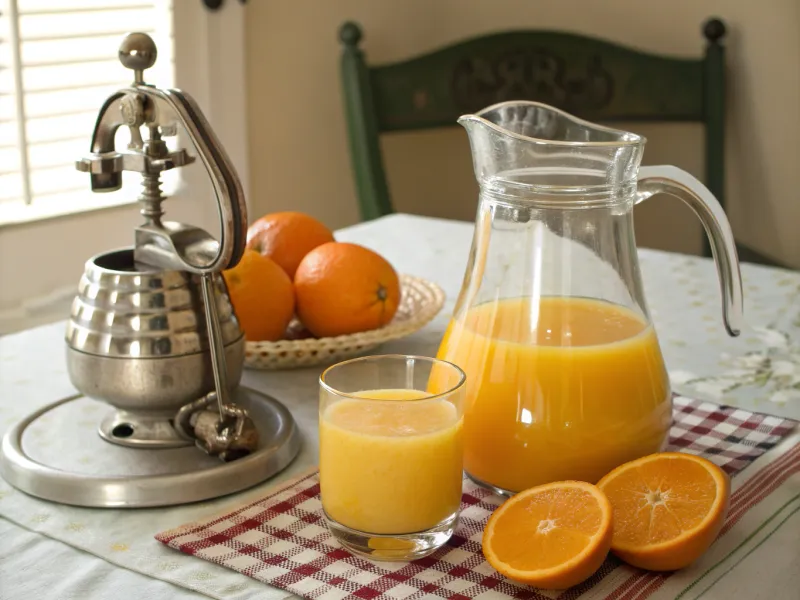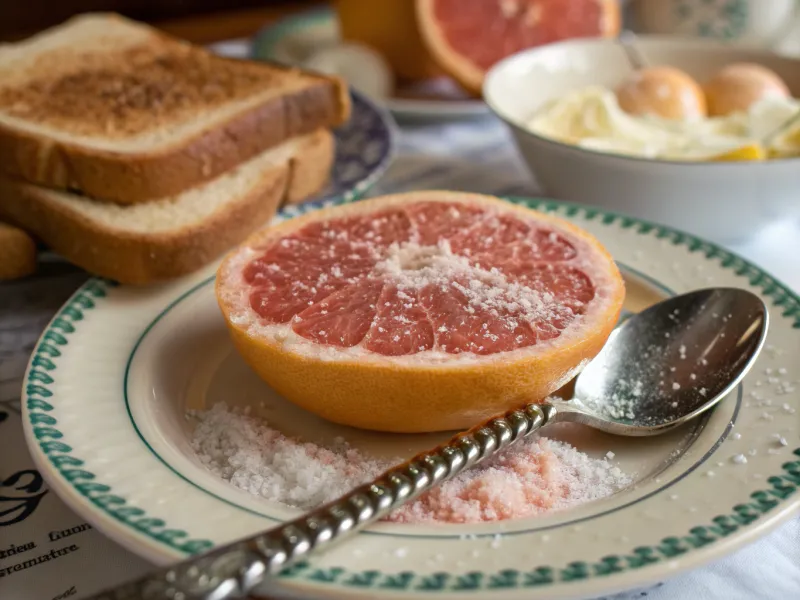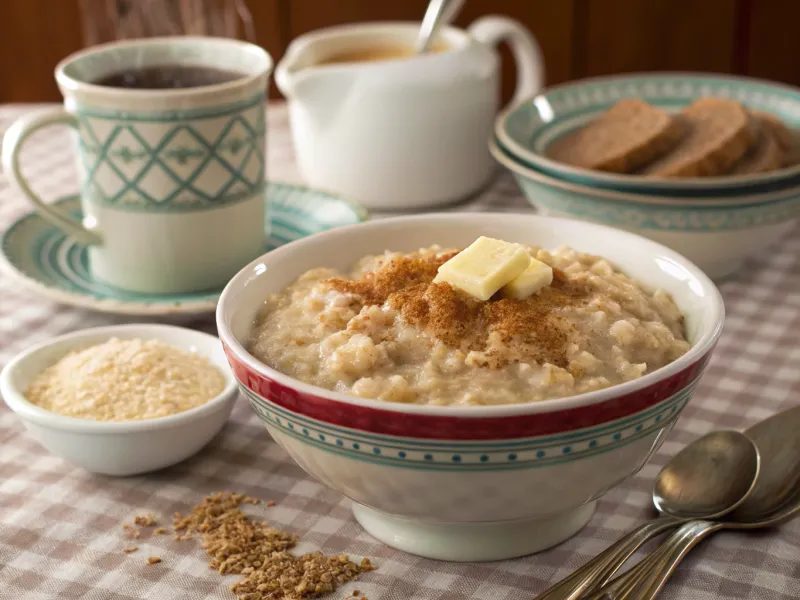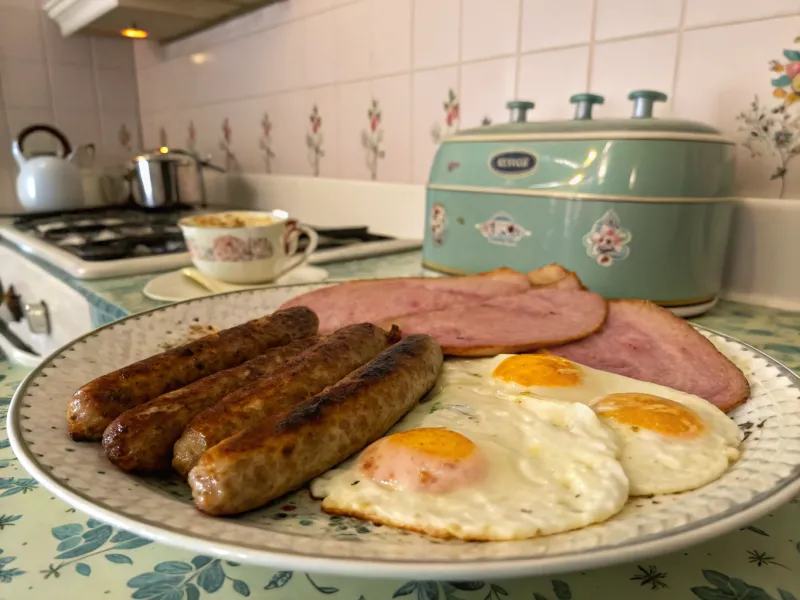Breakfast in the 1950s looked very different from what many of us eat today. Families gathered around the table for hearty, home-cooked meals that fueled them for the day ahead. From sizzling bacon to fluffy pancakes, the morning meal was a big deal in American homes. Join us as we explore the delicious and nostalgic foods that defined breakfast during this iconic decade.
1. Eggs and Bacon
Picture a sizzling skillet on a Saturday morning, filling the house with the irresistible smell of bacon. Eggs and bacon became the poster children for the American breakfast, thanks to clever advertising from meat and egg companies.
Nearly every household served this combo as the standard morning meal. Toast slathered with butter and a steaming cup of black coffee completed the plate.
2. Pancakes with Butter and Syrup
Weekend mornings meant one thing: pancake time! Moms would whip up fluffy stacks from scratch, creating a family tradition that brought everyone to the table.
Real butter melted into golden pools while maple or corn syrup cascaded down the sides. Kids would compete to see who could eat the tallest stack, while parents savored their coffee and the rare chance to relax together.
3. Coffee
Adults in the 1950s took their coffee seriously—strong, black, and always within reach. Electric percolators revolutionized home brewing, making it easier than ever to start the day caffeinated.
Instant coffee brands like Nescafé and Maxwell House became household names during this era. These products promised busy families quick convenience without sacrificing their morning ritual.
4. Toast with Butter, Jam, or Jelly
White bread toast appeared on nearly every American breakfast table, simple but essential. Chrome toasters became must-have kitchen appliances, gleaming proudly on countertops across the nation.
Families spread their toast with creamy butter, sweet jam, fruity jelly, or even cinnamon sugar for variety. Toast racks kept slices crisp and organized, adding a touch of elegance to everyday meals.
This humble food represented the growing convenience of modern life. Sliced bread and electric toasters meant breakfast could be quick yet satisfying, perfect for busy school and work mornings.
5. Cold Cereal
The 1950s launched the golden age of breakfast cereals, forever changing morning routines. Kellogg’s, Post, and General Mills competed fiercely, filling grocery shelves with colorful boxes and sugary promises.
Kids begged their parents for Corn Flakes, Sugar Smacks, and Cheerios, often influenced by TV commercials featuring cartoon mascots. A quick bowl of cereal with cold milk became the fastest way to feed children before school.
6. Omelets and Scrambles
When families wanted something fancier than plain scrambled eggs, omelets stole the show. Filled with cheese, ham, or fresh vegetables, these folded egg creations elevated weekend brunches.
Though slightly more time-consuming than basic eggs, omelets weren’t reserved for special occasions alone. Many households enjoyed them on lazy Sunday mornings when there was time to cook with care and creativity.
7. Breakfast Breads and Pastries
Sweet, sticky, and absolutely irresistible—cinnamon rolls and coffee cake made Sunday mornings feel extra special. These treats filled homes with mouthwatering aromas that woke up even the sleepiest family members.
Homemade versions required time and effort, but packaged options from Pillsbury started appearing in stores. This convenience allowed more families to enjoy bakery-style treats without hours of preparation.
8. Orange Juice
Orange juice became synonymous with healthy living during the postwar boom. Citrus growers launched massive marketing campaigns, convincing Americans that breakfast wasn’t complete without vitamin C.
Many families squeezed fresh juice using metal juicers, though frozen concentrate from Minute Maid offered easier alternatives. The bright, tangy flavor became as essential as coffee for starting the day right.
9. Grapefruit Halves with Sugar
Health-conscious eaters discovered grapefruit as a lighter breakfast option that still felt substantial. Halved and sprinkled with white sugar to cut the tartness, this citrus fruit became a mid-century diet staple.
Grapefruit symbolized the growing awareness of weight management and nutrition. Magazine advertisements promoted it as a slimming food, appealing especially to women watching their figures in the image-conscious fifties.
10. Hot Cereals
Before sugary cold cereals dominated completely, warm oatmeal and cream of wheat filled bellies on chilly mornings. These comforting bowls provided stick-to-your-ribs energy that lasted through lunch.
Families topped their hot cereals with butter, brown sugar, cinnamon, or fresh fruit for extra flavor. Cornmeal mush also appeared on tables, especially in rural areas where traditions ran deep.
Though eventually overshadowed by convenient cold cereals, hot porridges remained beloved by those who valued old-fashioned, wholesome morning meals.
11. Sausage Links and Ham Steaks
Bacon wasn’t the only meat sizzling in breakfast skillets across America. Sausage links and thick ham steaks added variety and a touch of luxury to weekend morning meals.
These heartier proteins often appeared during special occasions or lazy Saturday breakfasts when families had time to linger. The savory, rich flavors made them favorites among meat-loving households.
